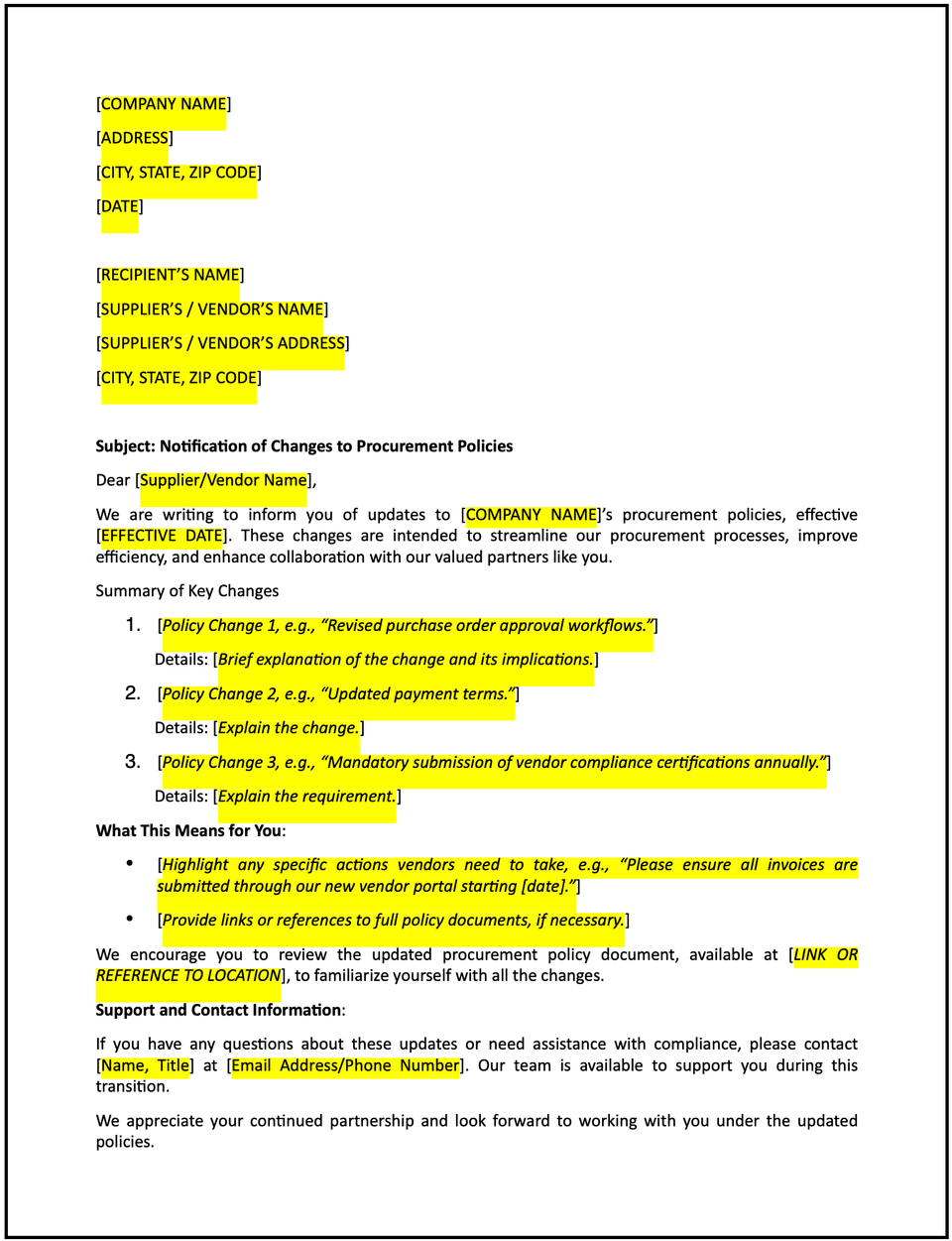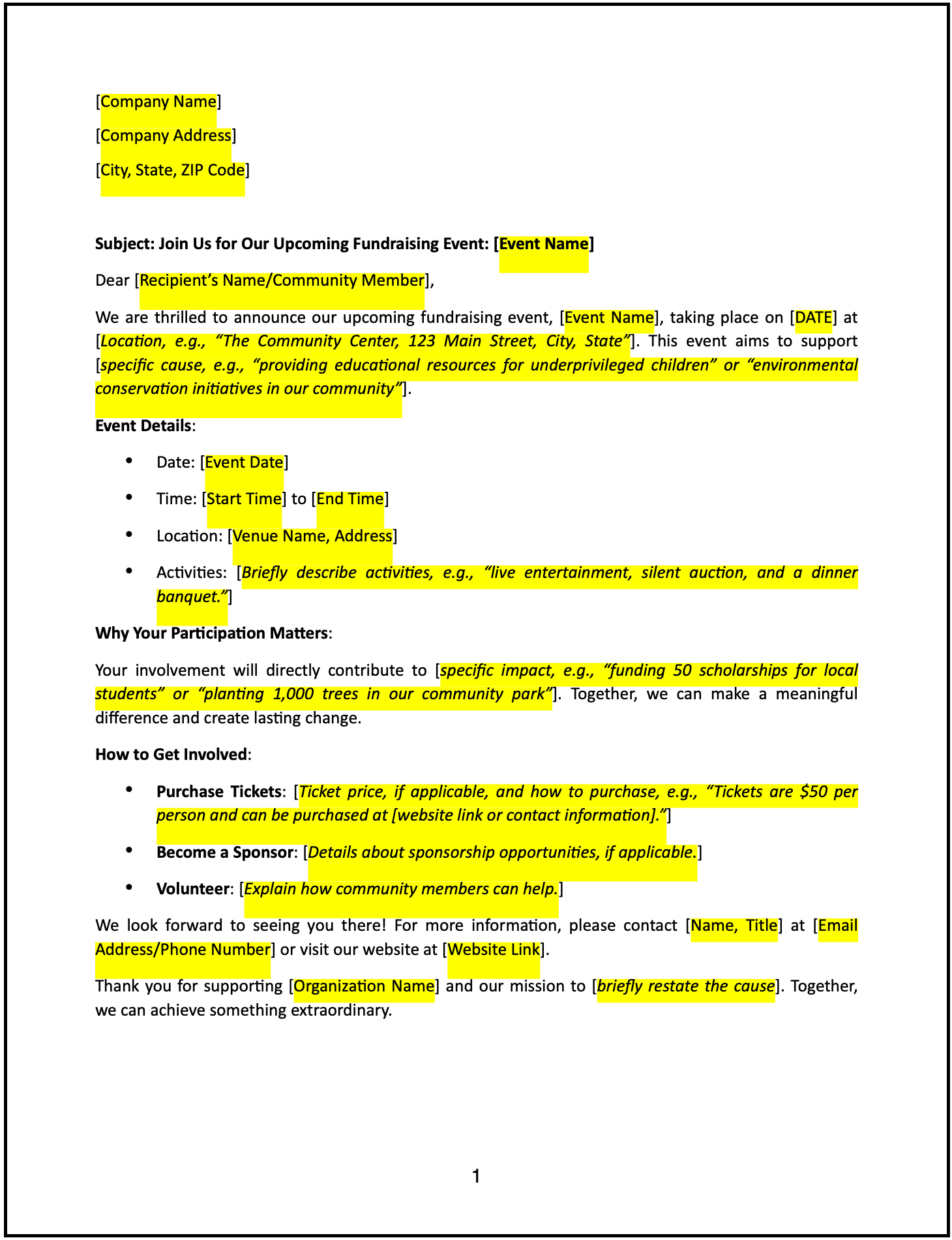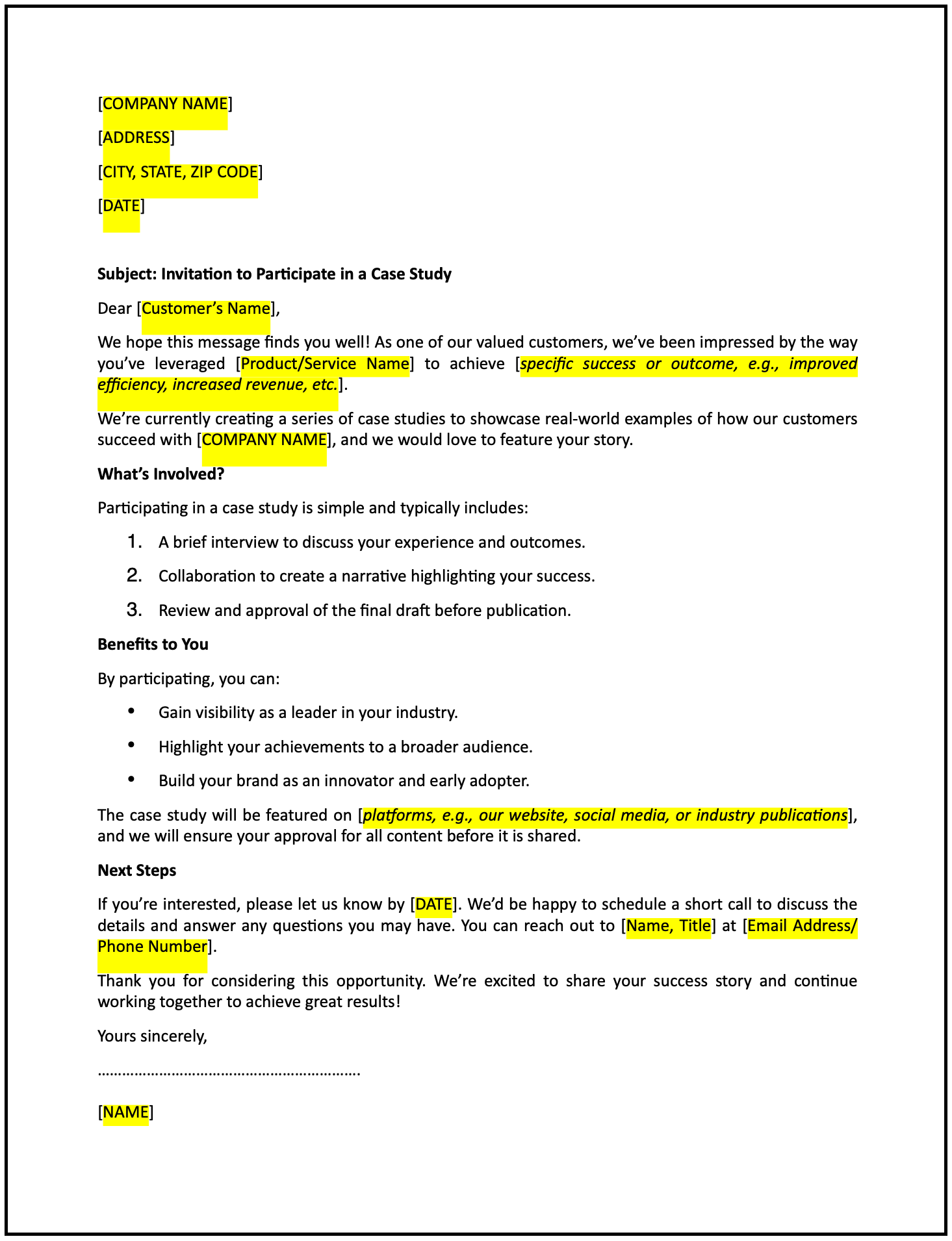Letter of changes to procurement policies: Free template

Letter of changes to procurement policies
A notification letter of changes to procurement policies is a formal communication used to inform stakeholders, such as suppliers, vendors, and internal teams, about updates or modifications to procurement procedures. This letter outlines the specific changes, explains their purpose, and provides instructions for compliance.
How to use this letter of changes to procurement policies
- Open with an introduction: Address the recipient respectfully and introduce the purpose of the letter—to notify them of changes to procurement policies.
- Explain the context: Briefly describe why the policies are being updated, such as regulatory compliance, process improvements, or organizational changes.
- Outline the changes: Clearly list the specific updates to the procurement policies, including details on how they will impact stakeholders.
- Highlight the effective date: State when the updated policies will take effect to ensure stakeholders have sufficient time to adapt.
- Provide guidance: Include instructions or resources to help stakeholders understand and implement the changes, such as a link to the updated policy document.
- Emphasize compliance: Encourage recipients to review the changes thoroughly and align their practices accordingly.
- Offer support: Indicate your willingness to address questions or provide additional information about the updates.
- Maintain a professional tone: Ensure the letter is clear, respectful, and focused on fostering compliance and cooperation.
- Provide contact information: Include details for recipients to reach out with questions or for further clarification.
Benefits of using a letter of changes to procurement policies
This letter ensures a structured and professional way to communicate updates while fostering clarity and compliance. Here’s how it helps:
- Promotes transparency: Clearly communicating changes builds trust and reduces confusion.
- Reflects professionalism: A well-crafted letter demonstrates respect and commitment to effective communication.
- Encourages compliance: Providing detailed guidance ensures stakeholders can adapt to the changes smoothly.
- Minimizes disruptions: Informing stakeholders in advance helps prevent misunderstandings or delays.
- Supports alignment: Regular updates ensure all parties are operating under the latest policies.
Tips for writing an effective letter of changes to procurement policies
- Be specific: Clearly outline the changes, their purpose, and their implications for stakeholders.
- Use professional language: Maintain a respectful and informative tone to foster understanding and cooperation.
- Provide context: Briefly explain why the updates are necessary and how they benefit the organization.
- Highlight the effective date: Ensure recipients are aware of when the changes will take effect.
- Include actionable steps: Share instructions for reviewing or complying with the updated policies.
- Keep it concise: Focus on the key points while ensuring the tone is professional and informative.
Frequently asked questions (FAQs)
Q: What details should I include in this letter?
A: Include the purpose of the changes, a summary of the updates, their effective date, and instructions for compliance.
Q: Should I personalize the letter?
A: Addressing recipients collectively (e.g., “Dear Vendors” or “Dear Procurement Team”) is often appropriate for this type of communication.
Q: Who typically sends this letter?
A: Procurement managers, compliance officers, or organizational leaders typically send this letter.
Q: How formal should this letter be?
A: The tone should be professional and informative, focusing on clarity and fostering compliance.
Q: When should this letter be sent?
A: Send the letter well in advance of the effective date to allow sufficient time for stakeholders to adapt.
Q: Can this letter include a link to the updated policies?
A: Yes, providing a link or attachment ensures recipients can access and review the full details of the updates.
Q: Is acknowledgment from the recipient required?
A: While not mandatory, requesting acknowledgment ensures stakeholders are aware of and aligned with the changes.
This article contains general legal information and does not contain legal advice. Cobrief is not a law firm or a substitute for an attorney or law firm. The law is complex and changes often. For legal advice, please ask a lawyer.


